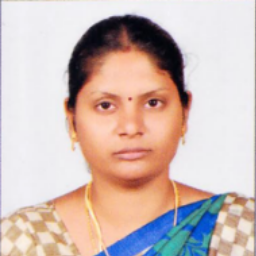International Journal of Information Technology and Computer Science (IJITCS)
IJITCS Vol. 17, No. 1, 8 Feb. 2025
Cover page and Table of Contents: PDF (size: 910KB)
Fuzzy Hybrid Meta-optimized Learning-based Medical Image Segmentation System for Enhanced Diagnosis
PDF (910KB), PP.47-66
Views: 0 Downloads: 0
Author(s)
Index Terms
Machine Learning, Meta-heuristic Optimization, Medical Image Segmentation (MIS), Disease Diagnosis, and Automated Detection
Abstract
This medical image segmentation plays a fundamental role in the diagnosis of diseases related to the correct identification of internal structures and pathological regions in different imaging modalities. The conventional fuzzy-based segmentation approaches, though quite useful, still have some drawbacks regarding handling uncertainty, parameter optimization, and high accuracy of segmentation with diverse datasets. Because of these facts, it generally leads to poor segmentations, which can give less reliability to the clinical decisions. In addition, the paper is going to propose a model, FTra-UNet, with advanced segmentation of medical images by incorporating fuzzy logic and transformer-based deep learning. The model would take complete leverage of the strengths of FIS concerning the handling of uncertainties in segmentation. Besides, it integrates SSHOp optimization technique to fine-tune the weights learned by the model to ensure improvement in adaptability and precision. These integrated techniques ensure faster convergence rates and higher accuracy of segmentation compared to state-of-the-art traditional methods. The proposed FTra-UNet is tested on BRATS, CT lung, and dermoscopy image datasets and ensures exceptional results in segmentation accuracy, precision, and robustness. Experimental results confirm that FTra-UNet yields consistent, reliable segmentation outcomes from a practical clinical application perspective. The architecture and implementation of the model, with the uncertainty handled by FIS and the learning parameters optimization handled by the SSHOp method, increase the power of this model in segmenting medical images.
Cite This Paper
Nithisha J., J. Visumathi, R. Rajalakshmi, D. Suseela, V. Sudha, Abhishek Choubey, Yousef Farhaoui, "Fuzzy Hybrid Meta-optimized Learning-based Medical Image Segmentation System for Enhanced Diagnosis", International Journal of Information Technology and Computer Science(IJITCS), Vol.17, No.1, pp.47-66, 2025. DOI:10.5815/ijitcs.2025.01.04
Reference
[1]X. Fei, Y. Wang, L. Dai, and M. Sui, "Deep learning-based lung medical image recognition," International Journal of Innovative Research in Computer Science & Technology, vol. 12, pp. 100-105, 2024.
[2]M. Thillai, J. M. Oldham, A. Ruggiero, F. Kanavati, T. McLellan, G. Saini, et al., "Deep learning-based segmentation of CT scans predicts disease progression and mortality in IPF," American Journal of Respiratory and Critical Care Medicine, 2024.
[3]J. Zheng, L. Wang, J. Gui, and A. H. Yussuf, "Study on lung CT image segmentation algorithm based on threshold-gradient combination and improved convex hull method," Scientific Reports, vol. 14, p. 17731, 2024.
[4]H. T. Gayap and M. A. Akhloufi, "Deep machine learning for medical diagnosis, application to lung cancer detection: a review," BioMedInformatics, vol. 4, pp. 236-284, 2024.
[5]T. Kunkyab, Z. Bahrami, H. Zhang, Z. Liu, and D. Hyde, "A deep learning‐based framework (Co‐ReTr) for auto‐segmentation of non‐small cell‐lung cancer in computed tomography images," Journal of Applied Clinical Medical Physics, vol. 25, p. e14297, 2024.
[6]E. K. Ruby, G. Amirthayogam, G. Sasi, T. Chitra, A. Choubey, and S. Gopalakrishnan, "Advanced Image Processing Techniques for Automated Detection of Healthy and Infected Leaves in Agricultural Systems," Mesopotamian Journal of Computer Science, vol. 2024, pp. 62-70, 2024.
[7]K. Dwivedi, M. Sharkey, S. Alabed, C. P. Langlotz, A. J. Swift, and C. Bluethgen, "External validation, radiological evaluation, and development of deep learning automatic lung segmentation in contrast-enhanced chest CT," European Radiology, vol. 34, pp. 2727-2737, 2024.
[8]P. Deepa, M. Arulselvi, and S. M. Sundaram, "Classification of Lung Cancer in Segmented CT Images Using Pre-Trained Deep Learning Models," International Journal of Electrical and Electronics Research, vol. 12, pp. 154-159, 2024.
[9]A. S. Moosavi, A. Mahboobi, F. Arabzadeh, N. Ramezani, H. S. Moosavi, and G. Mehrpoor, "Segmentation and classification of lungs CT-scan for detecting COVID-19 abnormalities by deep learning technique: U-Net model," Journal of Family Medicine and Primary Care, vol. 13, pp. 691-698, 2024.
[10]Y. Sun, J. Guo, Y. Liu, N. Wang, Y. Xu, F. Wu, et al., "METnet: A novel deep learning model predicting MET dysregulation in non-small-cell lung cancer on computed tomography images," Computers in Biology and Medicine, vol. 171, p. 108136, 2024.
[11]R. Rajkumar, S. Gopalakrishnan, K. Praveena, M. Venkatesan, K. Ramamoorthy, and J. J. Hephzipah, "DARKNET-53 Convolutional Neural Network-Based Image Processing for Breast Cancer Detection," Mesopotamian Journal of Artificial Intelligence in Healthcare, vol. 2024, pp. 59-68, 2024.
[12]J. Jiang and H. Veeraraghavan, "Self-supervised pretraining in the wild imparts image acquisition robustness to medical image transformers: an application to lung cancer segmentation," in Medical Imaging with Deep Learning, 2024.
[13]X. Chen, R. P. Mumme, K. L. Corrigan, Y. Mukai-Sasaki, E. Koutroumpakis, N. L. Palaskas, et al., "Deep learning–based automatic segmentation of cardiac substructures for lung cancers," Radiotherapy and Oncology, vol. 191, p. 110061, 2024.
[14]S. H. Hosseini, R. Monsefi, and S. Shadroo, "Deep learning applications for lung cancer diagnosis: a systematic review," Multimedia Tools and Applications, vol. 83, pp. 14305-14335, 2024.
[15]M. S. Sheela, G. Amirthayogam, J. J. Hephzipah, S. Gopalakrishnan, and S. R. Chand, "Machine learning based Lung Disease Prediction Using Convolutional Neural Network Algorithm," Mesopotamian Journal of Artificial Intelligence in Healthcare, vol. 2024, pp. 50-58, 2024.
[16]W. Ding, H. Wang, J. Huang, H. Ju, Y. Geng, C.-T. Lin, et al., "FTransCNN: Fusing Transformer and a CNN based on fuzzy logic for uncertain medical image segmentation," Information Fusion, vol. 99, p. 101880, 2023.
[17]C. Kaushal, M. K. Islam, S. A. Althubiti, F. Alenezi, and R. F. Mansour, "A framework for interactive medical image segmentation using optimized swarm intelligence with convolutional neural networks," Computational intelligence and neuroscience, vol. 2022, p. 7935346, 2022.
[18]V. Narayan, M. Faiz, P. K. Mall, and S. Srivastava, "A comprehensive review of various approach for medical image segmentation and disease prediction," Wireless Personal Communications, vol. 132, pp. 1819-1848, 2023.
[19]C.-L. Chin, J.-C. Lin, C.-Y. Li, T.-Y. Sun, T. Chen, Y.-M. Lai, et al., "A novel fuzzy dbnet for medical image segmentation," Electronics, vol. 12, p. 2658, 2023.
[20]Q. Shi, S. Yin, K. Wang, L. Teng, and H. Li, "Multichannel convolutional neural network-based fuzzy active contour model for medical image segmentation," Evolving Systems, vol. 13, pp. 535-549, 2022.
[21]N. Nagaraja Kumar, T. Jayachandra Prasad, and K. S. Prasad, "An intelligent multimodal medical image fusion model based on improved fast discrete curvelet transform and type-2 fuzzy entropy," International Journal of Fuzzy Systems, vol. 25, pp. 96-117, 2023.
[22]M. Ahammed, M. Al Mamun, and M. S. Uddin, "A machine learning approach for skin disease detection and classification using image segmentation," Healthcare Analytics, vol. 2, p. 100122, 2022.
[23]A. Talamantes-Roman, G. Ramirez-Alonso, F. Gaxiola, O. Prieto-Ordaz, and D. R. Lopez-Flores, "A TransUNet model with an adaptive fuzzy focal loss for medical image segmentation," Soft Computing, pp. 1-17, 2024.
[24]H. Hooda and O. P. Verma, "Fuzzy clustering using gravitational search algorithm for brain image segmentation," Multimedia Tools and Applications, vol. 81, pp. 29633-29652, 2022.
[25]C. Wang, X. Lv, M. Shao, Y. Qian, and Y. Zhang, "A novel fuzzy hierarchical fusion attention convolution neural network for medical image super-resolution reconstruction," Information Sciences, vol. 622, pp. 424-436, 2023.






